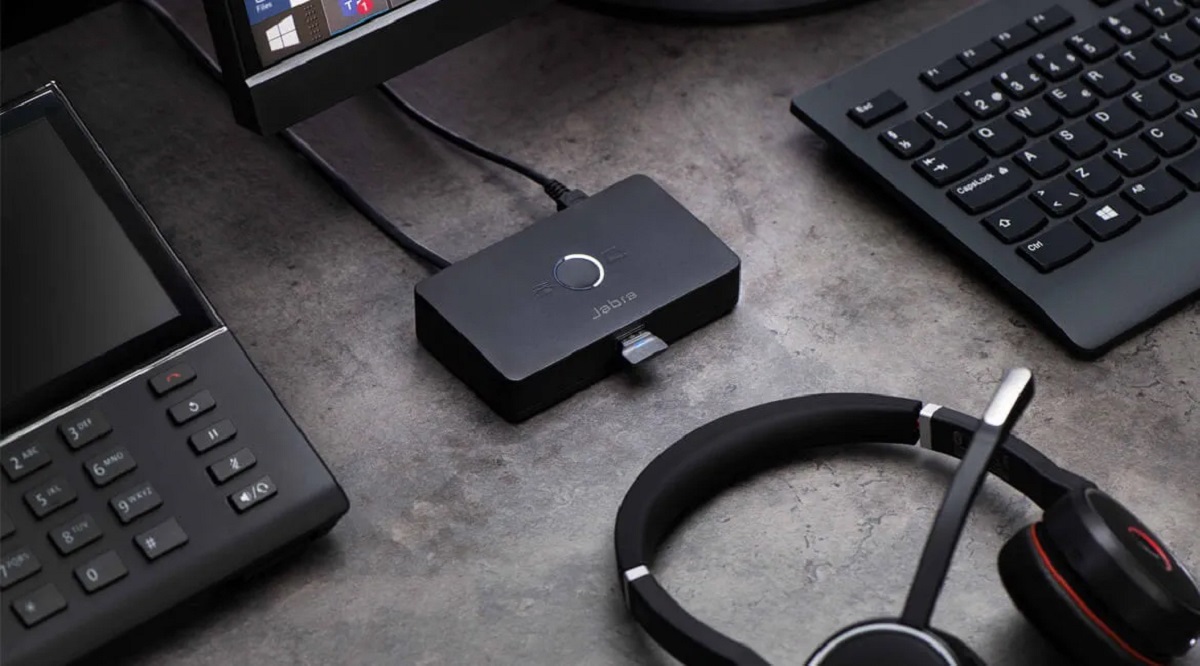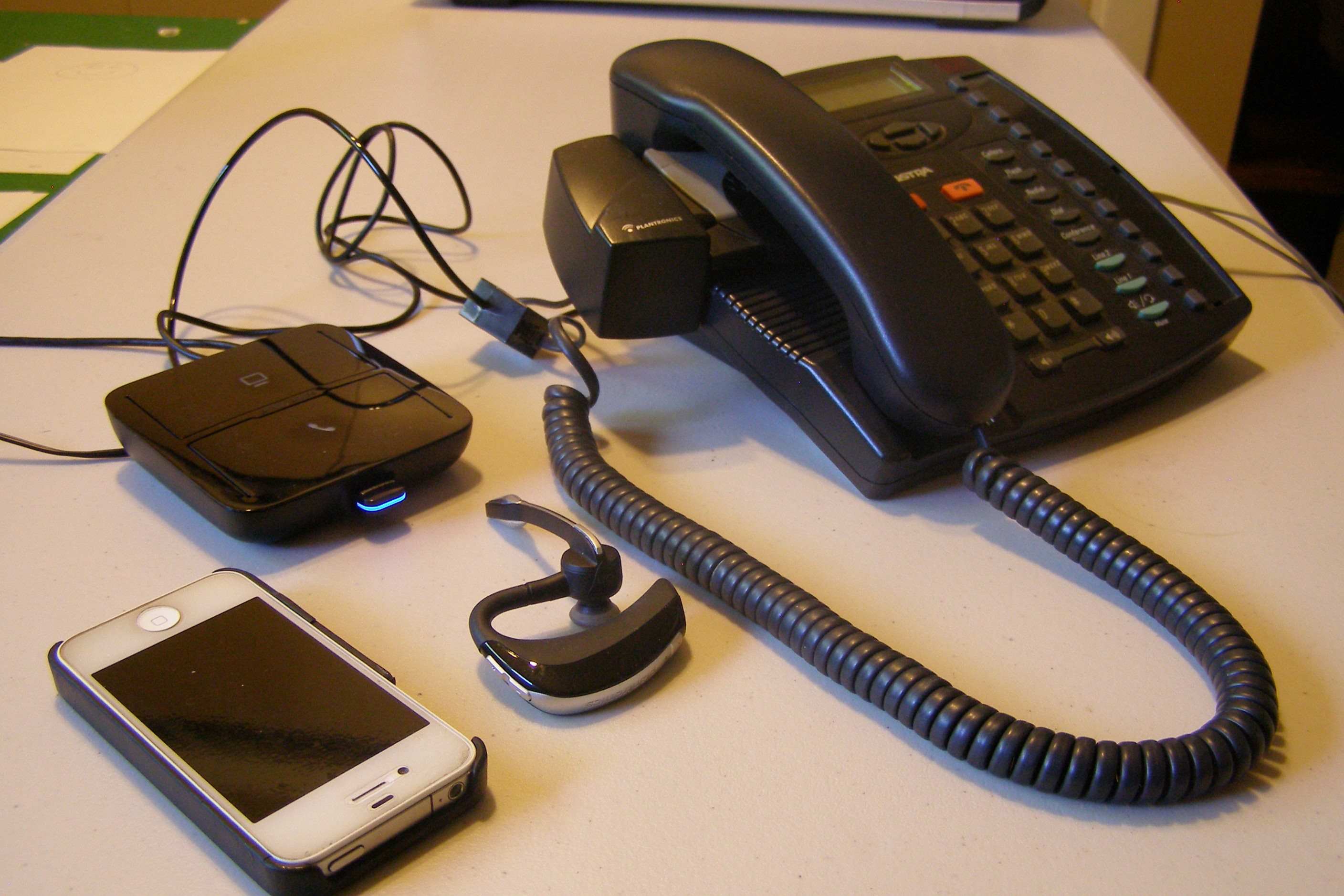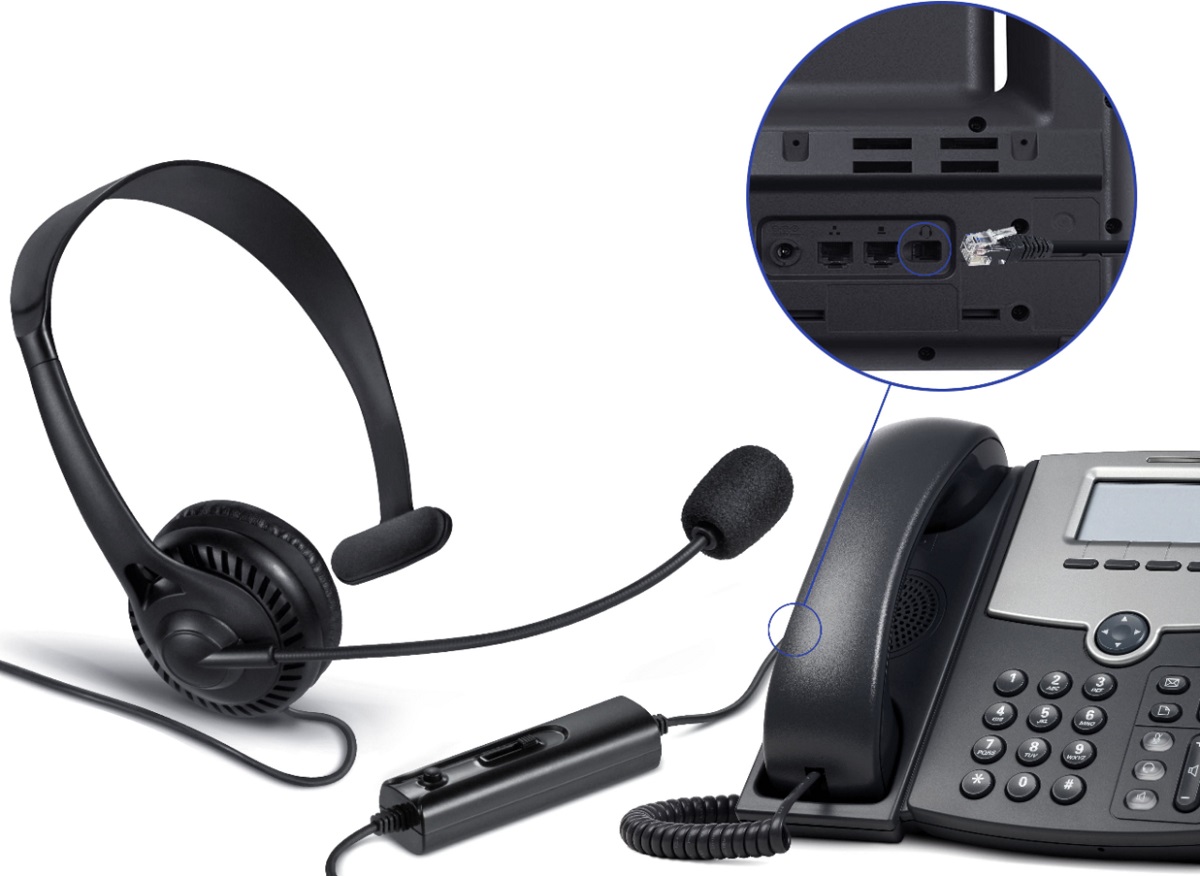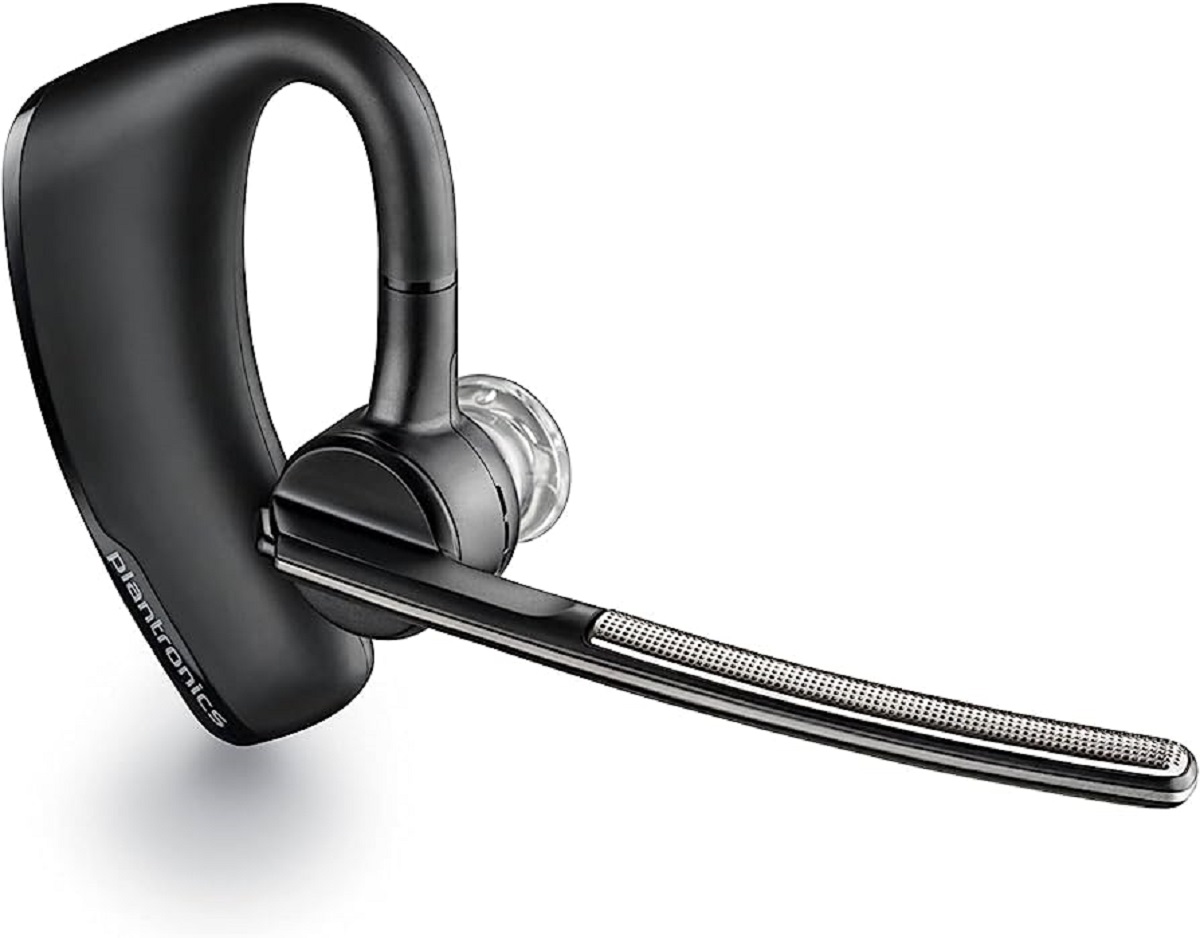Introduction
In today's fast-paced world, wireless technology has become an integral part of our daily lives, revolutionizing the way we communicate and stay connected. One such innovation that has gained prominence in the realm of wireless audio technology is the DECT headset. DECT, which stands for Digital Enhanced Cordless Telecommunications, offers a reliable and high-quality wireless communication solution, particularly in professional settings where mobility and clear audio are paramount.
As we delve into the realm of DECT headsets, it's essential to understand the underlying technology, how these headsets work, their advantages and limitations, as well as their diverse applications. Whether you're a busy professional seeking seamless communication during conference calls or a gamer looking for an immersive audio experience, DECT headsets have something to offer for everyone.
Let's embark on a journey to unravel the intricacies of DECT technology and gain insights into the fascinating world of wireless audio communication. By the end of this exploration, you'll be equipped with the knowledge to make informed decisions when choosing the right DECT headset to suit your specific needs and preferences.
What is DECT Technology?
DECT, or Digital Enhanced Cordless Telecommunications, represents a wireless communication standard renowned for its exceptional audio quality and robust connectivity. This technology operates in the 1.88 to 1.90 GHz frequency band, providing a reliable and interference-free communication platform. DECT has garnered widespread adoption in various applications, including cordless phones, wireless headsets, and baby monitors, due to its ability to deliver crystal-clear voice transmission and seamless mobility.
At its core, DECT technology employs time-division multiple access (TDMA) to divide the frequency band into time slots, enabling multiple users to share the same channel without encountering interference. This approach ensures efficient spectrum utilization and minimizes the risk of signal degradation, making DECT an ideal choice for environments with high wireless activity.
DECT technology also incorporates advanced encryption algorithms, bolstering the security of wireless communication. This feature is particularly crucial in professional settings where sensitive information is exchanged, as it mitigates the risk of unauthorized access and eavesdropping.
Furthermore, DECT boasts a robust range, allowing users to maintain connectivity across sizable distances. This attribute is especially advantageous in industrial and commercial environments where seamless communication is essential for operational efficiency.
In the context of headsets, DECT technology enables users to experience unparalleled audio fidelity, free from the constraints of wired connections. Whether engaging in conference calls, virtual meetings, or immersive gaming experiences, DECT headsets deliver pristine sound quality and seamless mobility, enhancing user comfort and productivity.
In summary, DECT technology represents a pinnacle of wireless communication, offering exceptional audio quality, robust security, and extensive coverage. Its versatility and reliability make it a preferred choice for a wide array of applications, from professional communication solutions to personal entertainment devices. Understanding the underlying principles of DECT technology sets the stage for exploring the myriad benefits and applications of DECT headsets.
How Do DECT Headsets Work?
DECT headsets function by leveraging the advanced capabilities of DECT technology to deliver seamless wireless audio communication. These headsets consist of a base unit and a wireless headset, with the base unit serving as the interface between the headset and the audio source, such as a desk phone, computer, or mobile device. Understanding the underlying principles of how DECT headsets operate provides valuable insights into their functionality and the benefits they offer.
Upon establishing a connection with the base unit, the DECT headset utilizes the allocated DECT frequency band to transmit and receive audio signals. The base unit acts as a hub, facilitating the seamless exchange of audio data between the headset and the audio source. This wireless communication is characterized by exceptional clarity and reliability, enabling users to engage in conversations or enjoy multimedia content without being tethered to a specific location.
DECT headsets employ advanced digital signal processing techniques to ensure that audio signals are transmitted with minimal latency and optimal fidelity. This results in a high-quality audio experience, free from distortions or interruptions, enhancing the overall communication or entertainment experience for the user.
Furthermore, DECT technology's inherent security features play a crucial role in safeguarding the integrity of audio transmissions. By employing robust encryption methods, DECT headsets mitigate the risk of unauthorized access or interception, ensuring that sensitive information remains protected during wireless communication sessions.
The seamless mobility offered by DECT headsets is another key aspect of their operation. Users can move within the coverage range of the base unit, maintaining clear audio communication without being tethered to a specific location. This mobility is particularly advantageous in professional environments, allowing individuals to stay connected during meetings, presentations, or while performing tasks that require freedom of movement.
In essence, DECT headsets work by harnessing the power of DECT technology to provide users with a reliable, secure, and high-fidelity wireless audio communication solution. By understanding the underlying mechanisms that drive the operation of DECT headsets, individuals can appreciate the technological sophistication that underpins these devices and the benefits they offer in diverse personal and professional scenarios.
Advantages of DECT Headsets
DECT headsets offer a myriad of advantages that make them a compelling choice for individuals and professionals seeking a superior wireless audio experience. From unparalleled audio quality to seamless mobility, these headsets are designed to elevate communication and entertainment to new heights. Let's delve into the notable advantages of DECT headsets:
-
Exceptional Audio Fidelity: DECT headsets are renowned for their ability to deliver pristine audio quality, ensuring that every conversation, conference call, or multimedia experience is characterized by clarity and precision. The advanced digital signal processing employed in DECT technology minimizes distortions and background noise, resulting in an immersive and engaging audio experience.
-
Robust Wireless Connectivity: DECT headsets leverage the robust DECT technology to provide reliable wireless connectivity. Users can move within the coverage range of the base unit without experiencing signal degradation or dropouts, enabling seamless communication and productivity in professional environments.
-
Enhanced Mobility: With DECT headsets, mobility is not compromised by wires or cables. Whether in an office setting, industrial environment, or at home, users can move freely while staying connected, allowing for flexibility and convenience during communication or while enjoying multimedia content.
-
Security and Privacy: DECT technology incorporates advanced encryption methods, ensuring that wireless communication remains secure and private. This is particularly crucial in professional settings where sensitive information is exchanged, providing peace of mind and confidentiality during conversations and data transmission.
-
Versatility and Compatibility: DECT headsets are compatible with a wide range of audio sources, including desk phones, computers, and mobile devices. This versatility allows users to seamlessly switch between different communication platforms, enhancing their convenience and adaptability in diverse scenarios.
-
Long Battery Life: Many DECT headsets are equipped with long-lasting batteries, offering extended usage time without the need for frequent recharging. This feature is especially beneficial for professionals who rely on uninterrupted communication throughout their workday.
-
Comfort and Ergonomics: DECT headsets are designed with user comfort in mind, featuring lightweight and ergonomic designs that minimize fatigue during prolonged use. Adjustable headbands, cushioned ear cups, and intuitive controls contribute to an enjoyable and comfortable wearing experience.
In summary, DECT headsets embody a convergence of cutting-edge technology and user-centric design, offering an array of advantages that cater to the diverse needs of modern communication and entertainment. Whether in professional settings or personal use, the advantages of DECT headsets position them as indispensable tools for seamless and high-quality wireless audio experiences.
Limitations of DECT Headsets
While DECT headsets offer a host of compelling advantages, it's important to acknowledge that they are not without limitations. Understanding these limitations provides a comprehensive perspective on the capabilities and considerations associated with DECT headsets.
Interference in Dense Wireless Environments
In densely populated wireless environments, such as offices or industrial settings with multiple wireless devices operating concurrently, DECT headsets may be susceptible to interference. This interference can manifest as signal disruptions or degraded audio quality, impacting the overall user experience. While DECT technology is designed to mitigate interference, the presence of numerous wireless devices in close proximity can pose challenges.
Limited Range
Although DECT technology provides robust wireless coverage, the range of DECT headsets may be limited in certain scenarios. Users who require extensive mobility beyond the typical coverage area of the base unit may encounter connectivity limitations. This can be a consideration in large workspaces or outdoor environments where users need to maintain communication over extended distances.
Dependency on Base Unit
DECT headsets rely on a base unit for wireless communication, which may introduce limitations in terms of portability and flexibility. Users must remain within the range of the base unit to ensure seamless connectivity, which can restrict mobility in certain situations. Additionally, the need for a dedicated base unit may pose logistical challenges in shared workspaces or dynamic environments.
Power Supply
While DECT headsets often feature long-lasting batteries, the reliance on battery power introduces the need for periodic recharging. In high-demand usage scenarios, such as continuous communication throughout the workday, users may need to monitor battery levels and ensure access to charging facilities to maintain uninterrupted operation.
Compatibility Constraints
Although DECT headsets are compatible with a wide range of audio sources, certain specialized or proprietary communication systems may not fully support DECT technology. This can limit the seamless integration of DECT headsets in specific professional environments, necessitating compatibility assessments before deployment.
Cost Considerations
The adoption of DECT headsets, particularly in professional settings requiring multiple units, may entail initial investment costs. While the long-term benefits of DECT technology are substantial, organizations and individuals must weigh the upfront expenses against the perceived value and return on investment.
Acknowledging these limitations empowers individuals and organizations to make informed decisions regarding the integration and utilization of DECT headsets. By understanding the considerations associated with DECT technology, users can effectively address potential challenges and leverage the numerous advantages offered by these advanced wireless audio solutions.
Applications of DECT Headsets
DECT headsets find diverse and impactful applications across various professional and personal scenarios, harnessing the power of wireless audio technology to deliver seamless communication and immersive audio experiences. The versatility and reliability of DECT headsets make them indispensable tools in the following applications:
Professional Environments
In corporate settings, DECT headsets play a pivotal role in facilitating clear and uninterrupted communication. They are ideal for professionals engaging in conference calls, virtual meetings, and customer support interactions, where audio clarity and mobility are paramount. Whether in bustling office environments or remote work setups, DECT headsets empower professionals to maintain high-quality communication while freely navigating their workspace, enhancing productivity and collaboration.
Healthcare and Medical Facilities
In healthcare settings, where effective communication is crucial for patient care, DECT headsets offer a valuable solution. Medical professionals, including doctors, nurses, and support staff, rely on DECT headsets for hands-free communication, enabling them to coordinate efficiently and respond promptly to patient needs. The wireless nature of DECT headsets enhances mobility within medical facilities, contributing to streamlined workflows and effective care delivery.
Industrial and Warehouse Operations
DECT headsets find applications in industrial and warehouse environments, where clear communication and mobility are essential for operational efficiency. From logistics personnel coordinating inventory management to factory workers collaborating on production processes, DECT headsets enable seamless communication without the constraints of wired devices. The robust wireless connectivity and long-range capabilities of DECT technology make these headsets invaluable tools for optimizing workflow coordination and safety protocols in dynamic industrial settings.
Gaming and Entertainment
In the realm of gaming and entertainment, DECT headsets offer immersive audio experiences, allowing gamers and multimedia enthusiasts to enjoy crystal-clear sound without being tethered to audio sources. Whether engaging in intense gaming sessions, streaming multimedia content, or immersing in virtual reality experiences, DECT headsets provide a wireless audio solution that enhances the overall entertainment experience. The exceptional audio fidelity and freedom of movement afforded by DECT headsets elevate the enjoyment of gaming and multimedia content.
Home and Personal Use
For individuals seeking wireless audio solutions in their daily lives, DECT headsets offer convenience and versatility. Whether making hands-free calls, enjoying music and podcasts, or engaging in virtual fitness sessions, DECT headsets provide a seamless and high-quality audio experience. The mobility and comfort of DECT headsets make them well-suited for personal use, catering to the diverse audio communication needs of modern lifestyles.
In summary, the applications of DECT headsets span a wide spectrum of professional and personal environments, where the seamless integration of wireless audio technology enhances communication, productivity, and entertainment experiences. The adaptability and reliability of DECT headsets position them as indispensable tools for modern communication and audio enjoyment across diverse settings.
Choosing the Right DECT Headset for Your Needs
Selecting the ideal DECT headset tailored to your specific requirements involves considering several key factors to ensure a seamless and satisfying wireless audio experience. Whether you're a professional seeking optimal communication tools or an individual looking to enhance your personal audio interactions, the following considerations will guide you in choosing the right DECT headset:
-
Audio Quality and Performance: Prioritize headsets with superior audio fidelity and clear voice transmission. Look for features such as noise-canceling microphones, wideband audio support, and advanced digital signal processing to ensure exceptional sound quality during calls and multimedia usage.
-
Comfort and Ergonomics: Opt for a headset designed for prolonged wear, featuring adjustable headbands, cushioned ear cups, and lightweight construction. Comfort-enhancing elements contribute to fatigue-free usage, particularly during extended work or entertainment sessions.
-
Wireless Range and Mobility: Assess the coverage range of the headset's base unit to ensure it aligns with your mobility needs. Consider the operational environment and the extent of freedom required for seamless communication. Additionally, verify the headset's performance in environments with potential wireless interference.
-
Battery Life and Charging Convenience: Evaluate the battery performance of the DECT headset, especially if prolonged usage is anticipated. Look for models with long-lasting battery life and convenient charging options to minimize interruptions during critical communication or entertainment activities.
-
Compatibility and Connectivity: Determine the compatibility of the DECT headset with your existing communication devices, such as desk phones, computers, and mobile devices. Ensure seamless integration with your preferred audio sources to facilitate effortless switching and versatile usage across platforms.
-
Security Features: For professional use cases involving sensitive information, prioritize DECT headsets with robust security measures, including encryption protocols and secure wireless communication standards. This ensures the confidentiality and integrity of critical conversations and data exchanges.
-
User Reviews and Reliability: Research user feedback and reviews to gauge the overall reliability and performance of the DECT headset models under consideration. Real-world experiences and insights from existing users can provide valuable perspectives on the headset's usability and durability.
-
Additional Features and Customization: Explore additional features such as customizable audio settings, intuitive controls, and compatibility with communication software or platforms. Tailoring the headset's functionality to your specific preferences can significantly enhance the overall user experience.
By carefully evaluating these factors and aligning them with your unique communication and audio requirements, you can confidently select the right DECT headset that complements your professional endeavors or personal audio enjoyment. The seamless integration of wireless audio technology through a well-suited DECT headset promises enhanced productivity, clear communication, and immersive entertainment experiences.
Conclusion
In conclusion, the realm of DECT headsets and wireless audio technology presents a compelling landscape of innovation and practicality. The journey through understanding DECT technology, exploring the functionalities of DECT headsets, and delving into their advantages, limitations, and diverse applications has shed light on the transformative potential of wireless audio communication.
DECT technology, with its foundation in Digital Enhanced Cordless Telecommunications, stands as a testament to the evolution of wireless communication standards. Its ability to deliver exceptional audio quality, robust security, and seamless mobility has positioned DECT as a cornerstone of modern wireless audio solutions. The advanced encryption algorithms and efficient spectrum utilization inherent in DECT technology underscore its reliability and adaptability across various environments.
DECT headsets, as the embodiment of DECT technology's capabilities, offer a host of advantages that cater to the diverse needs of professionals and individuals alike. From unparalleled audio fidelity and robust wireless connectivity to enhanced mobility and versatility, DECT headsets have redefined the standards of wireless audio communication. The applications of DECT headsets span across professional domains, including corporate environments, healthcare facilities, industrial operations, as well as personal and entertainment usage, where their seamless integration enhances communication, productivity, and audio enjoyment.
Acknowledging the limitations of DECT headsets is essential in fostering a comprehensive understanding of their capabilities. Factors such as potential interference in dense wireless environments, limited range, and dependency on base units provide valuable insights into the considerations associated with deploying DECT headsets in various settings. By addressing these limitations, users and organizations can effectively leverage the numerous benefits offered by DECT technology while mitigating potential challenges.
Choosing the right DECT headset tailored to specific needs involves a thoughtful evaluation of audio quality, comfort, wireless range, battery life, compatibility, security features, and user reviews. This comprehensive approach ensures that the selected DECT headset aligns with the user's communication requirements and delivers a seamless and satisfying wireless audio experience.
In essence, the world of DECT headsets and wireless audio technology continues to evolve, offering a blend of technological sophistication and user-centric design. The seamless integration of DECT headsets in professional and personal environments promises to elevate communication, productivity, and entertainment experiences, paving the way for a future where wireless audio communication sets new standards of excellence and convenience.

























